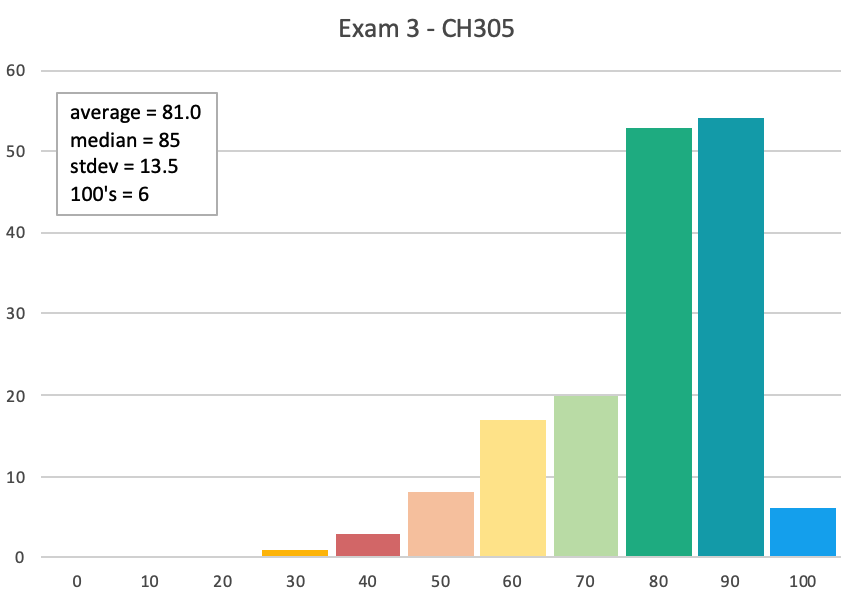exam 3
11/6
exam 3
11/6
Wednesday 11/6
3-3:50pm
UTC 2.102A

What we provide on Exams We will provide all students with:
The cover page with the periodic table will be very similar to the one available in the Appendix of the ChemBook website (Chapter 10).
NOTE: There are NO calculations of any type and therefore NO calculators of any type will be allowed.
Coverage: Exam 3 covers all the material that was covered on HW's 05 and 06. ChemBook Chapter: The exam covers all of Chapter 8. Topics are organic functional groups, organic structures (line structures), the big 6 plastics plus their structure and properties, addition vs condensation polymers, copolymer vs homopolymer (monomer), "other" polymers, plus some of nature's polymers.
Questions: The exam will have 20 multiple choice questions. This means that each question is worth 5 points. We will only grade you by what is bubbled in on the answer sheet that you turn in. We will not look at your exam copy for answers, nor consider them in any way. Bubble carefully and correctly.
Students will know...